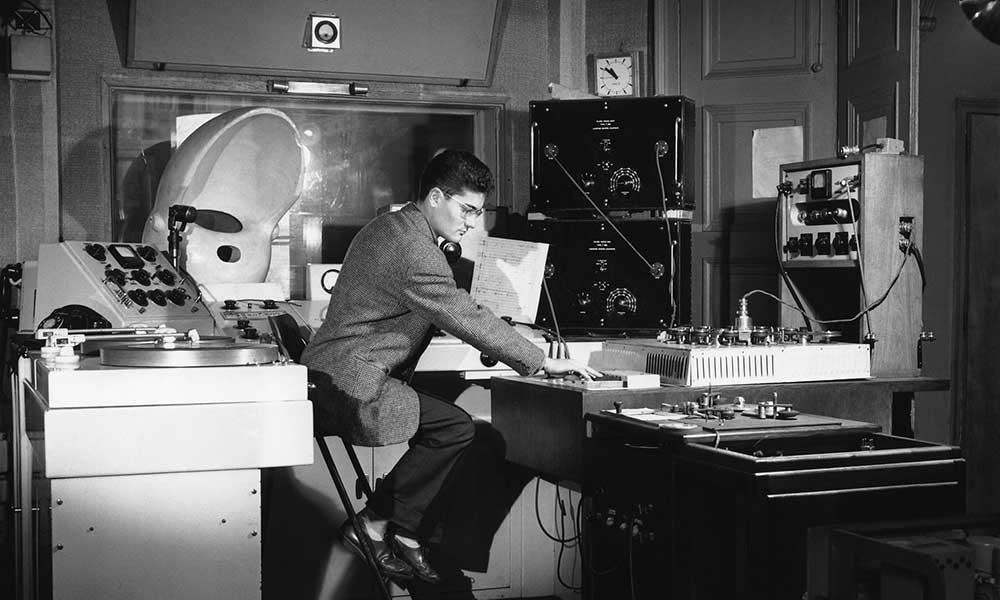“I try to work without any specific machinery and when I find a machine … I find a machine interesting when I have twisted it without knowing.”
– Pierre Henry
Passing away at the solemn age of 89 years old, French composer Pierre Henry was known for his work named ‘The Art Of Sounds’ and being the main inspiration to the opening theme of hit animation series Futurama. Henry was born in 1927 on December 9th in Paris, where he had entered the Paris Conservatory at the age of 10 where he then studied with great intent with teachers such as the renowned Nadia Boulanger (who had also taught Quincy Jones and Aaron Copland). At 15 years old, he began experimenting which the production of sounds made by random objects found around and at his house. There, he had formed his fascination with the manipulation of music now known as ‘noise music’. Based of his influence in electronic music, Henry was not fond of traditional musical instruments, where he would prefer to experiment with non-instrumental sounds.

In 1949 he had started working alongside Pierre Schaeffer at the Club d’Essai, in which they created their work with several musicians that collaborated in the creation of ‘Musique Concrete’ which could be described as electronic and acoustic sources forming collages of “prerecorded and manipulated sounds”. That then influenced the music industry in terms of the manipulation of sounds using electronic production as well as the usual recording and editing of tracks.
Henry’s influence can be seen in modern tv shows such as Futurama, where we see such detail in the theme. His reputation seems to be that pop fans either knew very little or nothing of the man. In the song ‘Psyche Rock‘, it was originally used in a ballet, however due to how unique the sound was, it then became a mold in which other DJs and producers are inspired by Henry. From reading Henry’s biography and learning about his dislike towards traditional musical instruments, I was surprised to find that this song had a lot of melody and flow, unlike some of his other works like ‘Classique: Bidule et un’.
Citations
d’Ybiade, Ariel. “Pierre Henry _ Psyché Rock.” YouTube, YouTube, 13 Jan. 2015, https://www.youtube.com/watch?v=vC1cgcOEErQ.
The Editors of Encyclopaedia Britannica. “Musique Concrète.” Encyclopædia Britannica, Encyclopædia Britannica, Inc., https://www.britannica.com/art/musique-concrete.
Editors of Encylopaedia. “Nadia Boulanger.” Encyclopædia Britannica, Encyclopædia Britannica, Inc., https://www.britannica.com/biography/Nadia-Boulanger.
Mallet, Franck. “Pierre Henry, the Art of Sounds.” The World’s Leading Classical Music Channel, https://www.medici.tv/en/documentaries/pierre-henry-the-art-of-sounds.
MovieTrailerGrave, . “Futurama (1999-2013) – Intro.” YouTube, YouTube, 30 Dec. 2016, https://www.youtube.com/watch?v=6F1QNfmiqHc.
N/A. “Noise Music.” Wikipedia, Wikimedia Foundation, 28 Nov. 2022, https://en.wikipedia.org/wiki/Noise_music#:~:text=Noise%20music%20is%20a%20genre,musical%20and%20non%2Dmusical%20sound.
N/A. “Studio D’essai.” Wikipedia, Wikimedia Foundation, 25 June 2021, https://en.wikipedia.org/wiki/Studio_d%27Essai.
Palombini, Carlos. “Musique Concrète Revisited.” Pierre Schaeffer and Pierre Henry, 1999, http://www.rem.ufpr.br/_REM/REMv4/vol4/arti-palombini.htm.
Rathbone, Oregano. “Pierre Henry: The Avant-Garde Composer Who Shaped Rock’s Future.” UDiscover Music, 9 Dec. 2021, https://www.udiscovermusic.com/stories/pierre-henry-musique-concrete/.
tmaxx2, . “Psyche Rock (Full Version).” YouTube, YouTube, 10 July 2009, https://www.youtube.com/watch?v=qssa6ec7faQ.
Topic, Pierre Henry. “Classique: Bidule Et Un.” YouTube, YouTube, 5 Dec. 2014, https://www.youtube.com/watch?v=UGoSQ5rnBFw.
Tsioulcas, Anastasia. “Remembering Pierre Henry, a Composer Who Made the Everyday Extraordinary.” NPR, NPR, 8 July 2017, https://www.npr.org/sections/therecord/2017/07/08/536055793/remembering-pierre-henry-a-composer-who-made-the-everyday-extraordinary.